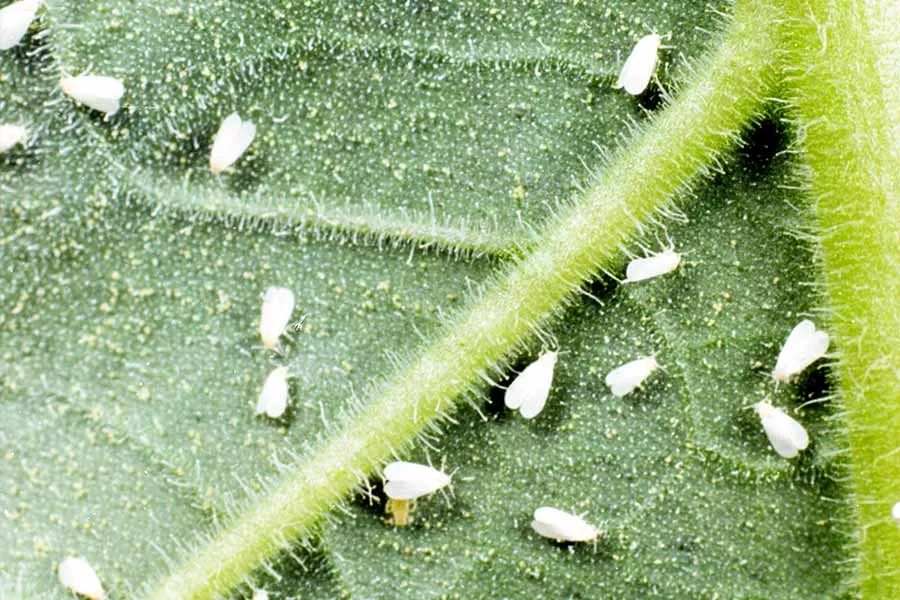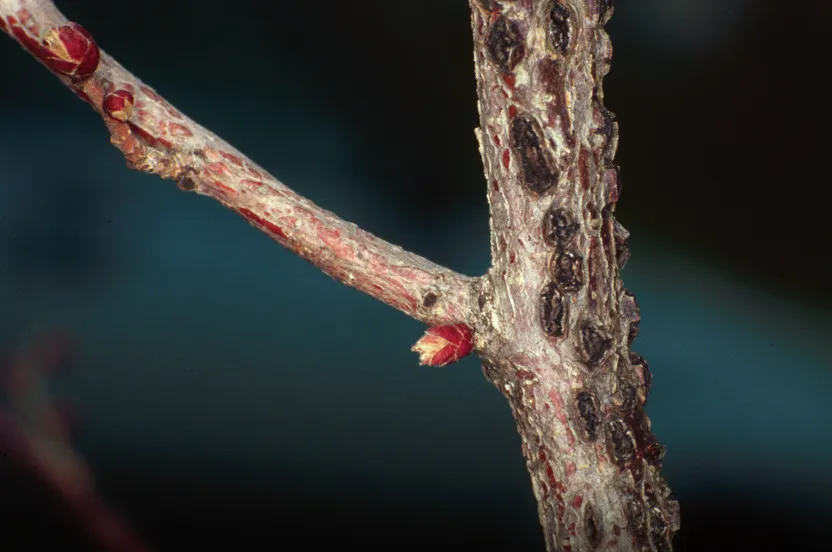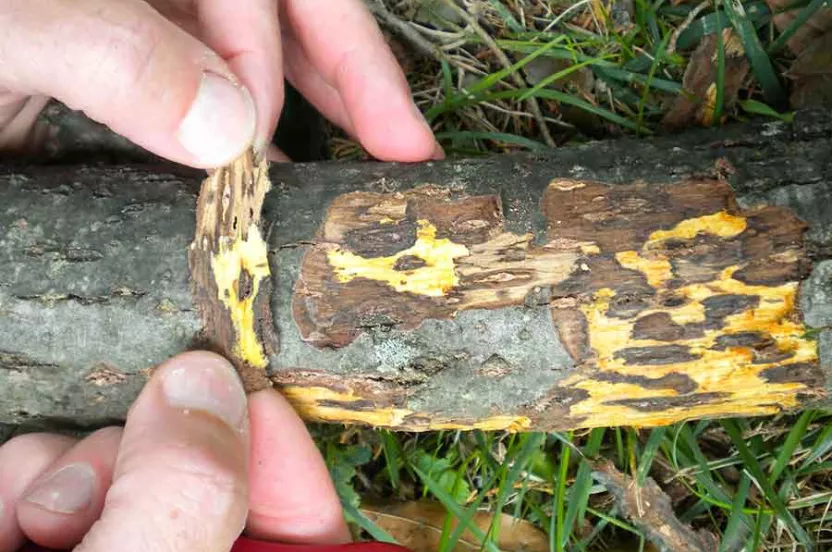Now live: The 2025 Canopy Report. Learn how Americans see trees. GET THE REPORT
Maintenance & Health
Whiteflies
Whiteflies, tiny insects that feed on plant juices and transmit viruses, pose a serious threat to ornamental and fruiting trees.

What are Whiteflies?
The whitefly belongs to the same group of insects as aphids and scales. It not only causes damage by feeding but also may transmit plant viruses. Whiteflies are capable of rapid reproduction in the summer heat, intensifying infestations.
The tiny, white insect is about 1/20 inch long. Mature adults are able to fly. They congregate on the undersides of leaves and swarm in clouds when the infested plant is disturbed.
About Whiteflies
Threat
What is the threat?
Whiteflies suck juices from plants, leading to wilting and stunted growth. Severe infestations cause leaf yellowing and leaf drop.
There are many species of whitefly, feeding on more than 500 species of host plants including many ornamental and fruiting trees. Problem species include citrus whitefly, ficus whitefly, ash whitefly and rugosa spiraling whitefly. Common tree hosts include ash, avocado, chinaberry, citrus, fig, fringe tree, mulberry, privet and various palms. Damage to edible and ornamental plants is estimated to be in the hundreds of millions of dollars worldwide.
Whiteflies also excrete honeydew, a sweet, sticky substance that attracts wasps, ants and bees and can serve as a medium on which a black fungus (also called sooty mold) can grow. In severe infestations, the honeydew can drip from the plant, making a mess of anything underneath—especially cars or sidewalks under trees.
Where is it?
Whiteflies can occur almost anywhere but are particularly troublesome in mild winter areas such as Florida, Texas and California, where they can breed year-round.
What can you do?
Beneficial insects such as black lady beetles and parasitic wasps can help control whitefly. But with severe infestations, it is best to contact your local extension service, certified arborist or professional nursery.
Information provided April 2015, courtesy of the Bayer Advanced Healthy Trees for Life initiative. Bayer®, the Bayer Cross® and Bayer Advanced™ are trademarks of Bayer. Photo by Dennis Haugen, USDA Forest Service, Bugwood.org


